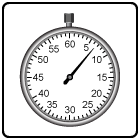


3 scores max per player; No foul language, show respect for other players, etc.
Name | Score | Date | ||
|---|---|---|---|---|
| 1 | ||||
| 2 | ||||
| 3 | ||||
| 4 | ||||
| 5 | ||||
| 6 | ||||
| 7 | ||||
| 8 | ||||
| 9 | ||||
| 10 |
This is a timed game. Your final score is equal to the total score minus time taken.
Game: CHOOSE OR LOSE
Aim: Choose the right answer; beat the clock
Method:
You start the game with 50 points. Each question has 2 to 4 answers. Select the correct answer before your time runs out to score points. Right answers are +10, wrong answers are -2, out of time is -5.
This is a timed game. Your final score is equal to the total score minus time taken.

anonymous
"Calculate the mean"
CHOOSE OR LOSE game to practice
'Prime factors' for 4th grade
4th grade / Multiply + Divide / Prime factors / Prime factors
Identify prime factors
Prime numbers are special numbers that can only be divided by 1 and the number itself without leaving a remainder. In other words, they have exactly two factors. So the number 3 is a prime number because it is divisible only by 3 and 1. The first few prime numbers are 2, 3, 5, 7, 11, 13, 17, and 19. Many numbers are not prime, they are composite numbers - numbers that have more than two factors. These numbers can be divided by different numbers, not just 1 and themselves. For example, 4 can be divided by 1, 2, and 4.
Prime factorization is a way to break down a composite number into smaller pieces that are all prime numbers. These smaller prime numbers are called "prime factors". To work out the prime factors of a number, start with the smallest prime number, 2, and see if it divides the given number without leaving a remainder. If it does, write down the number 2 and the result of the division. If it doesn't, move on to the next smallest prime number, 3, and try again. Repeat this process until you've found all the prime factors.
What are the prime factors of 10?
- First, divide 10 by the smallest prime number, which is 2.
- 10 ÷ 2 = 5. The result is another prime number, 5.
- So, the prime factors of 10 are 2 and 5 (10 = 2 x 5).
The prime factors of 10 are 2, 5
What are the prime factors of 60?
60 can be divided by 2 without leaving a remainder: 60 ÷ 2 = 30. Write down 2 and 30.
Now, check if the result (30) can be divided by 2 without leaving a remainder: 30 ÷ 2 = 15. It can, so write down 2 and 15.
The result (15) cannot be divided by 2, so move on to the next smallest prime number, 3. Check if 15 can be divided by 3 without leaving a remainder: 15 ÷ 3 = 5. It can, so write down 3 and 5.
The result (5) is a prime number, so we've found all the prime factors:
The prime factors of 60 are 2, 3, 5
In this topic you are asked to find the prime factors of numbers from 6 to 100.
Related topics
With our Choose or lose math game you will be practicing the topic "Prime factors" from 4th grade / Multiply + Divide / Prime factors. The math in this game consists of 16 questions that ask you to identify the prime factors of numbers up to 105.

Our CHOOSE OR LOSE game is a simple activity to help elementary math learners and will improve the speed at which you can solve problems in the given topic. It does not rely on the learner typing in the answer. Rather, the learner must choose the correct answer from a list of 2, 3 or 4 similar answers.
CHOOSE OR LOSE encourages faster problem-solving for common and vital elementary math topics. CHOOSE OR LOSE is a timed game with a leaderboard for each topic at each of the 4 levels on offer. You can play the game with or without audio and robots.
UXO * Duck shoot * The frog flies * Pong * Cat and mouse * The beetle and the bee
Rock fall * Four in a row * Sow grow * Choose or lose * Mix and match

Latest leaderboard entries: Choose or lose




How to play Choose or lose to practice
'Prime factors' for 4th grade

Our CHOOSE OR LOSE game asks the learner to click on the correct answer from a selection of possible answers before the clock runs down.
- Click on PLAY to start.
- You are presented with a topic question, then a list or grid of 2 to 4 possible answers (depending on the topic you have chosen).
- You must select the correct answer by clicking on it before the clock counts down.
- You have 10 seconds in total to answer each question.
- The clock starts ticking down 5 seconds after the answers have appeared.
- To hear the question again, click / tap on the question box.
- The browser will speak the potential answers on rolling-over them.
- A correct answer gains you 10 points.
- A wrong answer loses you 2 points.
- A time-out loses you 5 points.
- A score is kept of correct answers against number of answers.
- The game is timed, and your final score (points earned minus time taken) is given at the end of the game. Top 10 scores for a topic get you a place on the leaderboard.










